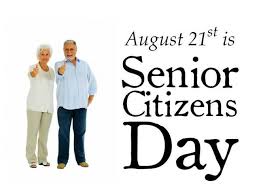World Cerebral Palsy Day – October 6, 2022, history significance
Cerebral Palsy (CP) is an unwelcome global phenomenon. World Cerebral Palsy Day, which occurs annually on October 6, reminds us that there over 17 million people impacted by this disorder. CP is one of the most common physical disabilities affecting the most vulnerable among us — children. Additionally, CP occurs over the span of a child’s entire lifetime with no cure. This year, become a catalyst for change to help improve the lives of those with cerebral palsy.
History of World Cerebral Palsy Day

Cerebral Palsy Day began with a small campaign called “Change My World in One Minute.” This project, started by Cerebral Palsy Alliance in Australia, sought for global change by allowing people to share ideas about new technologies and products that people with Cerebral Palsy could use to make their lives easier and better.
Then, as time progressed, more ideas were spread out and called out to inventors to make them. Research teams from all over the world take part in this holiday, allowing new inventions to form and be presented at the CPA’s yearly event.
This day not only became a day for invention and innovation but also became a social movement. In 2015, the social change targeted vital issues that people with CP face all over the world. Hence, the CPA updated their website to provide tools and resources for people with CP.
From there, Cerebral Palsy day became a way to make the lives of people with CP better technologically and socially. As it is a condition that at least 17 million people have, Cerebral Palsy Day helps bring awareness to CP, how to find resources to help those with CP and create an appreciation for those who work hard in research and technology towards a definite goal.
WORLD CEREBRAL PALSY DAY TIMELINE
1810
Dr. William John Little born
He was the first person to study cerebral palsy.
1932
First folding wheelchair invented
Harry Jennings, an engineer, built the very first modern folding wheelchair to improve the lives of those with motor impairments.
1948
A key cerebral palsy organization founded
The innovative United Cerebral Palsy Association was formed to help people with cerebral palsy receive better diagnosis, treatment and funding.
1949
Major mental health agency created
The National Institute for Mental Health was funded and organized to assist those with mental disabilities.
2002
The CDC conducted major U.S. CP study
The Centers for Disease Control and Prevention undertook the first U.S. cross-country study on the prevalence and impact of cerebral palsy.
HOW TO OBSERVE WORLD CEREBRAL PALSY DAY
Tell your story
Both children and adults with cerebral palsy deserve to be heard. If you have the disorder — or you’re a parent, caregiver, or friend of someone with CP — blog about your experience. Post pictures throughout social media letting everyone know about World Cerebral Palsy Day and why it is so important. People with CP need to burst out of the shadows and shout their confidence.
Attend a discussion on CP
Although there are over 350 million people who are connected in some way to cerebral palsy, there are lingering misconceptions about the disorder. There are cultures that believe CP is contagious. But wherever there is the darkness of ignorance, there must be a way to shine the light of education. By attending an event on cerebral palsy, you can find out what different countries are doing to create awareness and you may even come up with a few ideas for your own neighborhood.
Throw the kids a party
Sadly, there are many children with cerebral palsy who may experience feelings of isolation from not living in a positive, accessible environment. If you have a child or know a child with CP, throw a party or set up a play day because all children need to play. At the party, set up easy games for the younger children and video games for the older kids. Make the environment festive as well as a day they will always remember.
5 THINGS ABOUT CEREBRAL PALSY THAT WILL MAKE YOU PAUSE FOR THE CAUSE
It mainly affects children
The numbers are chilling. One in four children with CP are unable to talk; one in three can’t walk; one in two have a mental or intellectual disability; and one in four has epilepsy.
It affects infants
One in 500 infants is born with cerebral palsy.
It affects preemies
Almost half of the people with CP were born premature.
Cerebral Palsy stigmatizes
In many societies around the world, people with CP are kept uneducated and hidden away from the rest of the community.
Cerebral Palsy hits hard in the Netherlands
In the Netherlands, a baby is born with cerebral palsy every 22 hours.
WHY WORLD CEREBRAL PALSY DAY IS IMPORTANT
Cerebral Palsy is not a disease
In order to correctly examine cerebral palsy, it’s important to note what it is not — a disease. In fact, CP is considered a disorder. The effects of CP change from person to person. Those effects include a weakness in one or both hands, epilepsy, intellectual disability, and a total inability to control movement such as walking.
World Cerebral Palsy Day promotes inclusion
One of the big goals of World Cerebral Palsy Day is to promote more inclusive societies for people with CP. One way to accomplish this is to educate the world on the idea that CP is not some isolated disorder. In many societies, people with CP are either pitied and overprotected — or they are regarded with suspicion. Some cultures believe that a mother was cursed for doing something wrong if her child was born with CP. World Cerebral Palsy Day is an opportunity to produce actions that will lead to more open minds and societies.
World Cerebral Palsy Day tackles big issues
Cerebral Palsy is a worldwide disorder affecting millions of people, primarily children. Global organizations are collaborating together to take on the big issues that CP sufferers face. According to World Cerebral Palsy Day organizers, there is an active group of families and organizations in 65 countries working on improved CP diagnosis and treatment, better quality of life, educational opportunities, and charitable contributions to fund continued research.
Sandeep Raiza — Content Writer, Website Designer, SEO Strategist, and WordPress Expert AI specialist delivering impactful digital solutions that drive business growth.Combining creative storytelling with technical expertise.



